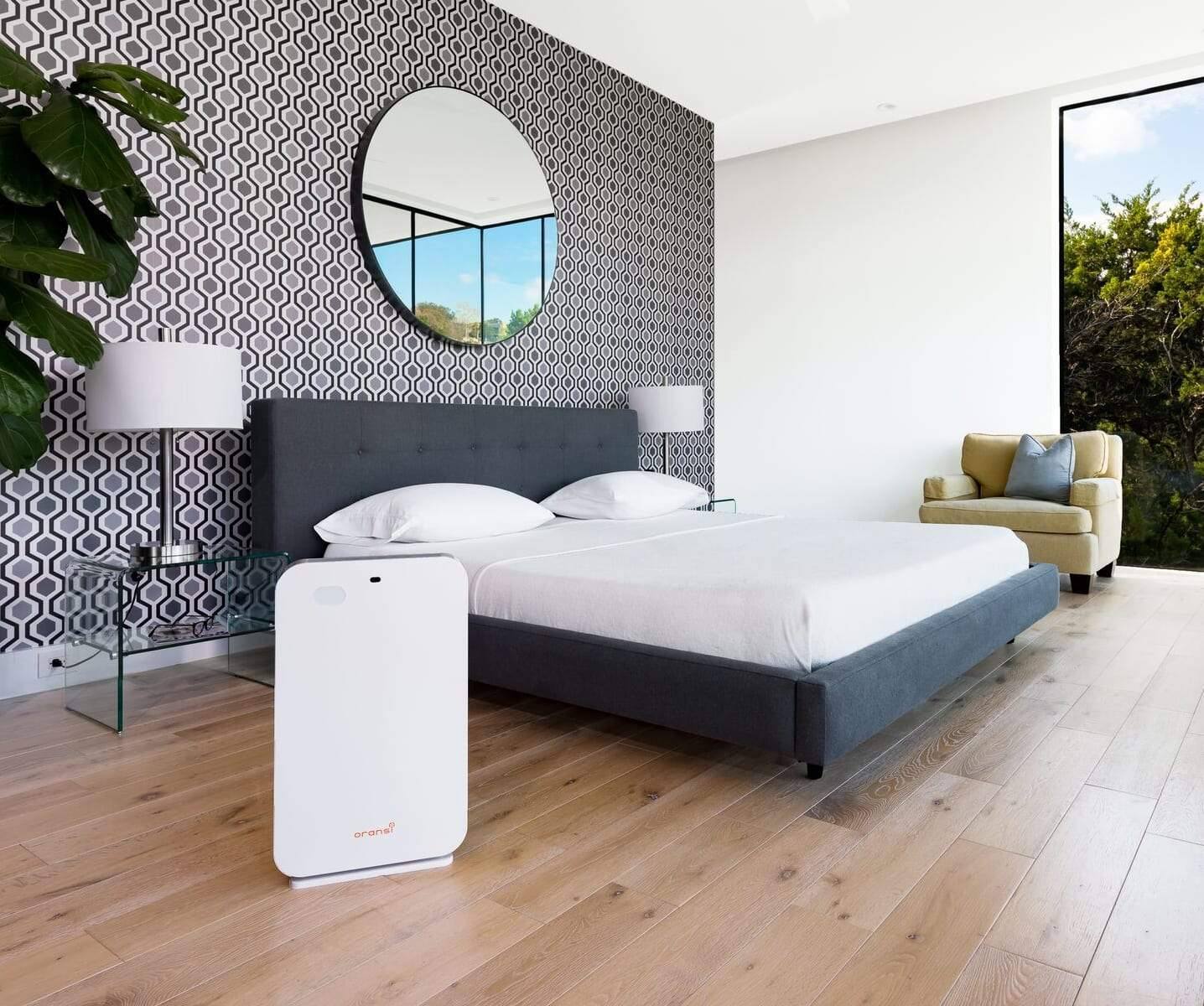
Can air purifiers protect you from COVID-19
People all over the globe have been significantly impacted by the COVID-19 pandemic. To date, 150 million people have been affected and over 300 thousand have sadly lost their lives. Small actions and COVID-appropriate behavior can help save lives. Wearing masks, social distancing, and sanitizing goes a long way. With the COVID-19 pandemic, people are increasingly concerned about the quality of the air they are breathing. Following new evidence on SARS-CoV-2 airborne transmission and the general recognition of long-range aerosol-based transmission has got a lot of people thinking about air purifiers. The question on a lot of people's minds is that can air purifiers help protect us against viruses like COVID-19 causing coronavirus? To know the answer, one must understand how air purifiers work and how viruses, like the COVID-19 virus, are transmitted. We at Vizocare aim to help you understand this.
How are respiratory viruses transmitted?
COVID-19 is a novel disease. The scientific research community is still trying to get information about the same every day. A lot of our understanding about how it spreads is still incomplete. COVID-19 is an infectious disease of a contagious nature. It is caused by the coronavirus scientifically termed as SARS -CoV-2. When the virus comes in contact with mucous membranes, especially in the nose and mouth, the infection gets transmitted.
Just like measles and influenza (flu), COVID-19 is a viral infection and can be transmitted through aerosol. However, it can be transmitted by other means like direct contact or using articles touched by the infected person. The virus can spread through respiratory droplets that are produced when an infected person exhales. Larger droplets (>5 microns in diameter) fall out of the air rapidly within seconds to minutes. Social distancing and masks, and engineered filtration pressure differentials help prevent this form of transmission. The virus can also be transmitted by touching an article or surface of an infected person, and then touching their mouth, nose, or eyes. Good hygiene and sanitization are helpful for this form of transmission.
When an infected person exhales, they produce many small respiratory droplets too (≤5 microns in diameter). The aerosolized virus that is smaller can remain in the air for a long time and travel far from the source via air currents. Air purifiers can extremely helpful in curbing this form of transmission. In a hospital setting, negative pressure can be essential in controlling airborne infection using an air purifier equipped with an outflow kit to direct airborne contaminants out of a room.
The first line of defense for protection against viral infection is controlling the source: hand washing and sanitizing, wearing face coverings/masks, and maintaining social distancing. Along with these source control practices, air purifiers can help reduce airborne viruses.
How does an air purifier work?
Mechanical air purifiers make use of filters to trap particles with a mesh filter. This mesh filter is typically woven of glass or special synthetic fibers. High-Efficiency Particulate Air (HEPA) filters are a type of mechanical air purification filter. Mechanical filtration is the safest method and has shown to be highly effective for removing airborne particles from the air. However, one must know the significant differences in the functionality of air filters. Mechanical filters trap particles of a larger diameter and let air pass through them just like a strainer catching food while water and dirt filter out. Whereas synthetic air filters have a charged media that comprises synthetic fibers with an electrical charge to elevate the ‘stickiness’ of the filter. Owing to the advantages of high airflow, the majority of HEPA filters today use synthetic media. However, these fibers lose their charge over a period when particles remain ‘stuck’ to the filter and the filter becomes overloaded. Mechanical filters provide better performance when considering a longer period when helping filter viruses. Due to such a difference in the long-term performance of mechanical and synthetic filter media, mechanical filters provide better performance over time when helping filter viruses too.
Another type of air cleaner is UV light devices. They do not remove anything from the air. They are essentially designed to kill any type of virus, bacteria, or mold spores floating around by exposing them to ultraviolet (UV) light.
Ionizers are another type of air purifier that provides air particles with an electrical charge. This charge pulls them towards anything with an opposite electrical charge. These objects may be the collector plates present within these devices themselves or surfaces around the room (curtains, walls, carpets, ceilings, upholstery). It is pretty similar to the concept of static electricity. While ion generators can remove tiny particles (including tobacco smoke) from the indoor air, they do not remove gases or odors. They may be relatively ineffective in removing large particles such as pollen and house dust allergens. Another type, ozone generators bring about substantial changes in the typical oxygen molecule such that it has three atoms instead of just the usual two. This three-atom molecule is called ozone. It interacts very differently with its environment than the typical air we breathe does.
Ozone is a lung irritant. It is produced indirectly by ion generators and some other electronic air purifiers. Ozone generators directly produce it. While indirect ozone production is of slight concern, there is an even more significant concern with the direct type and purposeful introduction of a lung irritant into indoor air. FDA (Food and Drug Administration) has set an upper limit of 0.05 parts per million of ozone for medical devices. So, when considering buying an ionizer or ozone generating air purifier, make sure the level of ozone it generates is within the safety zone.
How to choose an air purifier?
To make it a bit easier for a person who is purchasing an air purifier, we have a few recommendations. According to the director of the Healthy Buildings Program, Harvard University, Joseph Allen “The air cleaner has to be employed as part of a multi-layered defense strategy.”
We must follow some specific criteria while purchasing an air purifier. The first is the CADR (Clean Air Delivery Rate). This is a guide for air purifier unit ratings. The CADR rating system for air purifiers/cleaners helps gauge both the filter's efficiency that a particular device uses and also tells us how much air moves through it.
According to the U.S. Environmental Protection Agency, machines that use a HEPA filter which is a type of pleated mechanical air filter can remove at least 99.97% of dust, pollen, mold, bacteria, pathogens, and other particles with a size of 0.3 microns. These filters do not kill the virus, the way UV light can. However, that's not a critical factor in clearing the air of coronavirus particles.
You do not require UV or some other process because the virus is captured on the filter media. Once the virus particles have been captured, they do not further grow, and they cannot be released. So there is no need for anything other than an air purifier with a HEPA filter.
The second vital thing to take into consideration when choosing an air purifier is the size of the room where it will be used. Everyone needs to size it suitable for the main room or any other rooms.
The higher the CADR rating, the larger the area it can serve. In general, product packaging can tell us the largest size area or room the unit can handle. Environmental engineers generally measure indoor air quality by air changes seen per hour (ACH). ACH value indicates the number of times the air inside a particular room is filtered every sixty minutes.
As a rule of thumb, specialists recommend 4 to 6 air changes per hour for indoor spaces. That entails that the entire air volume in a room is being cleaned or replaced every ten to fifteen minutes. That's enough to remove COVID-19 virus aerosols from the air and reduce the risk of transmission.
Just keep in mind that we recommend four to six air changes per hour, so a quick rule of thumb is to look for a portable air cleaner with a CADR of at least 300 for every 500 square feet of space."
The Environmental Protection Agency (EPA) provides a reliable guide for the minimum CADR levels needed for rooms of different sizes in its online Guide to Air Cleaners in the Home. For all rooms with eight-foot ceilings, it recommends:
- CADR of 65 for 100 square feet of room
- CADR 130 for 200 square feet room
- CADR 195 for 300 square feet room
- CADR 260 for 400 square feet of room
- CADR of 325 for 500 square feet room
- CADR of 390 for 600 square feet room
Buyers can also use tools available online like the Harvard-CU Boulder Portable Air Cleaner Calculator for Schools online tool, which was initially created for the teachers in educational institutes to pick an effective air cleaner for the classes. This can give everyone a rough estimate for rooms of various sizes in their home.
Do remember, you need to clean/replace filters at set intervals for air cleaners to do their job well, some every 3 months, others every 5 years, depending on the brand of the air purifier. If you are in the process of buying a device with a HEPA filter, it is essential to get an opinion from experts and follow the manufacturers' recommendations on maintenance and replacement.
Here’s how a CADR test is conducted:
- Air purifiers being tested are placed in the test space of 1,008 cubic feet roughly a room with these dimensions 11′ x 11′ x 8′ room.
- Dust particles, pollen, and tobacco smoke pollutants are introduced into the room.
- The air purifiers/cleaners that are being tested are turned on for about twenty minutes.
- After running for this time, the remaining contaminants are tested, and then this is converted into the final CADR rating.
The bottom line on air purifiers and viruses
Air purifiers are not the only first line of defense against viruses. Social distancing, good hygiene and sanitation, wearing masks, and exercising caution should be the first lines of defense. Even the most efficient air purifiers are not 100% effective at preventing the spread of viruses. An air purifier can filter ultrafine airborne particles, including viruses like COVID-19 causing coronavirus. It is part of a bigger picture, the defense plan to help prevent virus transmission.
Vizocare is a premium medical equipment company that manufactures the best air purifiers for protection against COVID 19. From everyone at Vizocare, we hope you stay safe and healthy!

Leave a comment